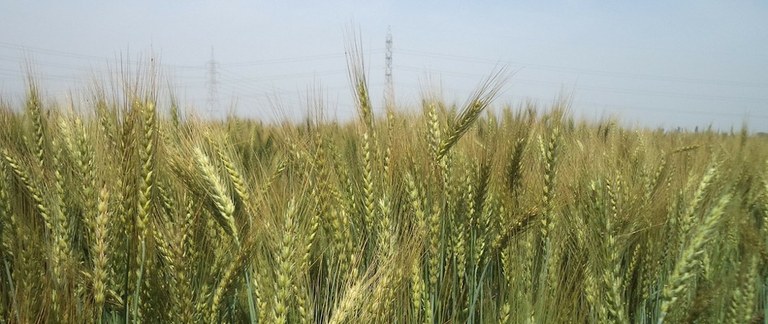Do you want to keep up to date? Subscribe to our newsletter. 1 mail every 2 months! |
 |

Cerdanyola del Vallès, 5th December 2023 Nithyapriya Manivannan, former ALBA-UAB PhD student, is the first author of the paper published last Thursday on Scientific Reports. Her thesis was about the selenium biofortification of wheat. She studied the selenium plant uptake mechanisms and its interaction with pollutants using synchrotron analytical techniques.
Now, Manivannan and their colleagues from the UAB continue they research in selenium biofortification focusing on the interaction with mercury as a soil pollutant. In their work, the speciation of mercury in wheat plants grown hydroponically under the presence of mercury and biofortified with selenium has been investigated by X-ray absorption spectroscopy at CLÆSS beamline. Elemental speciation involves the determination of the chemical forms of an element -mercury in this case- in a particular matrix. In waters, sediments and soils, speciation enables the determination of the chemical forms that are bioavailable and potentially toxic to biota.
Mercury pollution in agricultural soils and its potential pathway to the human food chain can pose a serious health concern. Understanding the pathway of mercury in plants and how the speciation may change upon interaction with other elements used for biofortification can be critical to assess the real implications for the final plant-based products.
On the other hand, selenium plays a vital role in regulating the metabolic activities in humans as it is needed for the thyroid gland functioning, effective immune response, fertility and detoxification of free radicals. For the human metabolism, seleno-amino acids are acquired from external dietary sources and one of their major sources is crops, where the selenium content depends on the its presence in the cultivation soil but it is occasionally too low to satisfy the human needs. Selenium enriched functional-foods have emerged as an appealing biofortification solution which is already used for common crops, for example, in southern Finland.
Therefore, the UAB-ALBA team aimed to assess the interplay between these two elements since selenium may form complexes with mercury reducing its bioavailability and toxicity. They analyzed at CLÆSS beamline the mercury chemical state in different parts of the wheat plant after their exposure: roots, shoots and grains.
The results show that the selenium biofortification of wheat does not prevent, in general, the mercury translocation to grains. Only one selenium treatment (the 1:1 mixture of selenium (IV) and selenium (VI)) seemed to have an effect in reducing the levels of mercury. This selenium biofortification treatment inhibits the accumulation of methylmercury (one of the most toxic mercury forms) in grains offering protection against mercury-induced toxicity to a certain extent. These findings can be applied to understand the risks of performing selenium biofortification in the presence of mercury contamination.
Scientists conclude that "considering the fact that the treatment maximize the selenium accumulation in grains and minimize the mercury accumulation, it could be suggested that this is the most convenient treatment for biofortification when mercury is present in the culture media". They also highlight the need of further studies, as "the reported results provide a reliable experimental approach which need to be expanded towards field conditions or foliar application for practical purposes".
Reference: Nithyapriya Manivannan, Maria Angels Subirana, Roberto Boada, Carlo Marini, Mercè Llugany, Manuel Valiente & Laura Simonelli. Mercury speciation in selenium enriched wheat plants hydroponically exposed to mercury pollution. Sci Rep 13, 21132 (2023). https://doi.org/10.1038/s41598-023-46056-5




